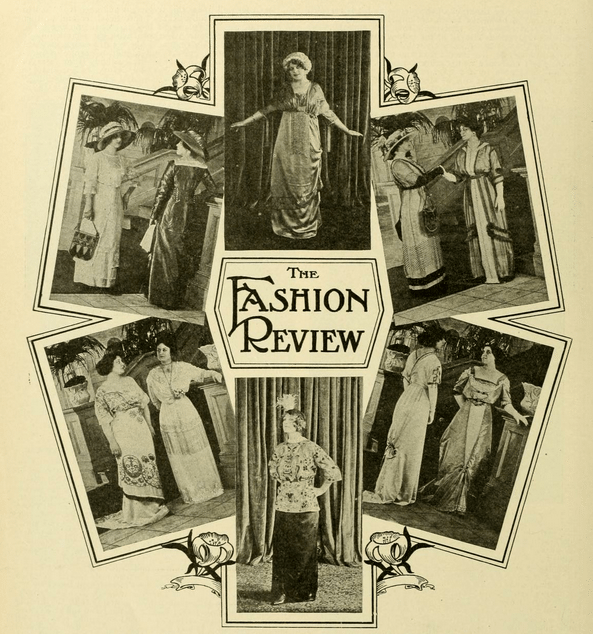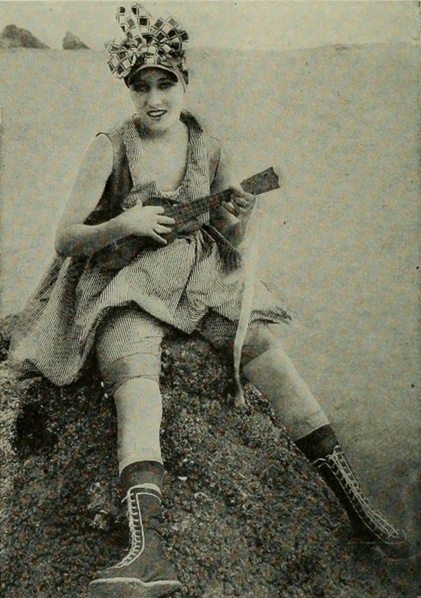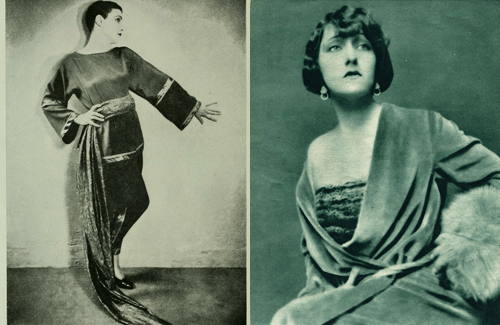The business of designers making affordable versions of fashions made famous by stars at awards ceremonies actually has its roots deeply seated in the days of silent film. Prior to the advent of film, it would take weeks and even months for fashions and trends to make their way across the country. But once film was introduced, fashions would spread in just a matter of days. This process would be accelerated even further by films that were created specifically to showcase the fashion fads of the moment. “The Fashion Review” by Rex Studios was released in April of 1912 and was quite simply a “quarterly review of feminine fashions taken from modes and models furnished by the leading department store of New York City.” But even films that were not solely focused on fashion often help create trends of their own.
During the silent era, Gloria Swanson was widely considered the most sophisticated and glamorous actress on the silver screen. While she was doing slapstick comedies with Mack Sennett, she was just another of the Sennett Bathing Beauties whom he was trying to mold into a new Mabel Normand — the star comedienne of Sennett’s Keystone Studio. True to her character, Swanson declared that she didn’t want to be anything other than herself, and promptly left Keystone. When she joined forces with director Cecil B. DeMille, he helped turn her into a glamorous, dramatic actress that audiences adored and aspired to be.
DeMille became known for his elaborate sets and lavish costumes, and as time went on they became even more opulent and enviable. Even though the costumes were often impractical, fashion designers, fan magazines and boutiques were quick to embrace them and spread the trend across the country. A story from the October 1923 issue of the film fan magazine Screenland, perfectly documented the influence screen beauties, like Gloria Swanson, Peggy Shaw and Mae Murray, had on the negligee market. Suddenly absent were the high-necked, modest designs enjoyed by the screen favorites’ mothers, and brightly colored, risque chiffon pieces quickly replaced them. As the article so cleverly summarized it, “Every time Gloria Swanson appears in a new picture, the market price of flannelette drops 10 points.” Fashion wasn’t the only thing to be directly influenced by film — if a bottle of perfume was featured in a film, sales would skyrocket the following day.
Although Swanson was experiencing incredible success as a part of the DeMille team, she was unhappy. Even early on, she feared playing second fiddle to a costume or gown. She told Picture-Play magazine in 1922, “I realize that clothes make me what I am, and I dread, at the same time, becoming a mannequin sort of actress.” In the end, that’s what she felt she had become under DeMille’s direction. She longed to show her talents as a dramatic actress with interesting character parts, but felt herself being overshadowed by her wardrobe. She often referred to herself as nothing but a clothes horse.
When Swanson left DeMille, he was left to search for an actress who could fill her shoes literally and figuratively. He was impressed with veteran actress Leatrice Joy and her sleek and sophisticated look, but there was still a test to pass: She had to be able to carry herself in the same elegant, graceful manner that Swanson had while wearing one of her incredible gowns. DeMille was pleased with the result and Joy filled the void Swanson had left behind. In her later years, she openly talked about inheriting the role of clothes horse from Swanson.
Visit our Silent Film pinboard for more fashion-focused film ads, including ones featuring Swanson, Joy and Mae Murray. And if you’re new to our silent film series, catch up on previous posts here.
Want to dive deeper into the world of silent film? Keep up with my posts over on Curtains or on Chicago Nitrate.



